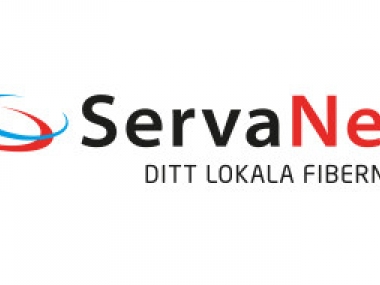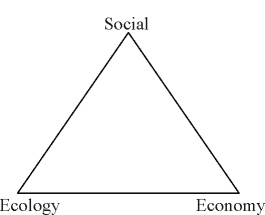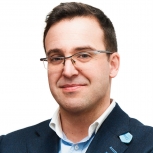ServaNet – Regional Open Fiber Network
Edited on
29 October 2021Miguel Sousa, Urbact Lead Expert developed a Case Study on ServaNet – Regional Open Fiber Network. The Scope of this case study is about municipalities in the same territory sharing the costs of developing a technological infrastructure, like it happens in the Västernorrland county in Sweden that includes Ånge and other 6 rural municipalities. The 7 municipalities are coowners of ServaNet, a regional broadband service provider, that is also implementing other lowcost/ low range solutions for IoT networks, such as LoRa.
ServaNet is a good example of a metropolitan area network, i.e. a broadband network available locally in one or more municipalities. ServaNet, like most other urban networks, is mostly built with fiber optics and is a so-called open net. It supplies fiber networks in the municipalities: Sundsvall, Härnösand, Timrå, Ånge, Strömsund and Ragunda, and is owned by the municipalities, or in some cases by utilities in municipalities, providing its inhabitants with access to the sharpest options in the Internet, television and smart services for the connected home, and ensuring the coordination of the offer across a vast region.

ServaNet business model, as an open city network is an infrastructure that is accessible to all players in the market on equal terms. The network is open to anyone who wants to rent black fiber or data links and to anyone who wants to offer services in the active network where communication services are provided. In the open city networks, the service providers compete with service content. The network owner provides dark fiber and data links, for example, to service providers. The fact that the network owner does not provide its own service content ensures an interest in attracting new service providers to the network.
ServaNet works with a network fee that is invoiced by ServaNet to the end customer. This is the fee that the customer pays to use our cables. Before each year, ServaNet makes a yearly budget together with the network owner to agree on how much will be built in the coming years.Within this budget, ServaNet makes transactions that are profitable, either during the contract period (corporate transactions), or have a positive cash flow after ten years (private customers).
ServaNet's ownership model is very open with the opportunity for the shareholders to have a dialogue about what is eligible for lease and
what is not. A network owner has every opportunity to make strategic decisions, but these are not always eligible for lease. The shareholders in ServaNet take a certain profit in the lease and also take part of the profit in the company ServaNet AB. How large a share each shareholder has in ServaNet depends on the population in each municipaity and turnover on the network that exists within the own municipality.
Sustainability for ServaNet is based on the sustainable development triangle described on the following dimensions: Social, Economic and Environmental. Social sustainability benefits from the fact that ServaNet provide good conditions for living and working in the region, including rural areas. Reducing vulnerability and maintaining the health (i.e., resilience, vigor and organization) of social and cultural systems.

Also, is Economic sustainable and gives to the cities a return on their investments in the fiber networks. Economic efficiency plays a key role in ensuring optimal use of the services provided. The Environmental sustainability focus on measurement of environmental impact
of our activity, in terms of mobility, land works and CO2 emissions. Five years ago, world leaders committed themselves to the 17 Sustainable Development Goals to achieve three important things by 2030: eliminating extreme poverty, reducing inequalities and injustices in the world, and resolving the climate crisis. ServaNet's ambition is to contribute to 8 of the 17 goals.
- GOAL 3: Good Health and Well-being: The focus for ServaNet has been to safeguard the health and well-being of staff and to follow the health authority's recommendations.
- GOAL 4: Quality Education: ServaNet focuses on our end customers and on its own staff. Good study environments require good broadband connections, which are made possible by ServaNet's fiber connections.
- GOAL 5: Gender Equality: ServaNet works for a gender equality organization without discrimination.
- GOAL 7: Affordable and Clean Energy: We work to ensure that everyone has access to reliable and secure broadband infrastructure, which contributes to society's energy transition.
- GOAL 9: Industry, Innovation and Infrastructure: The company works to ensure that society has access to a robust and secure infrastructure with high transmission capacity, which is the basis for being able to follow digital development.
- GOAL 10: Reduced Inequality: ServaNet works to make the effects of digital exclusion visible and we have pointed out the differences in broadband access in sparsely populated areas versus urban areas and cities. We have therefore actively contributed to fiber expansion in rural areas.
- GOAL 11: Sustainable Cities and Communities: Open fiber networks create new opportunities for smart cities. The company is actively working to establish a wide range of services from a number of service providers that can be used in the expansion of 5G networks, among other things.
- GOAL 12: Responsible Consumption and Production: ServaNet always considers these aspects in the business and in our procurements.
ServaNet model can be applied to other European regions, however, the degree of maturity of suitable technological infrastructures in place and IoT ecosystems, will influence the transfer potential. Small towns, villages and rural regions can benefit of owning a regional open fiber network.
Investing in regional open fiber network is a proven game-changer for any given ecosystem. In fact, investing in open access fiber could benefit the economy, end-users, investors, and operators by enabling: “macroeconomic benefit to the region/cities, higher valuations/returns to shareholders, better efficiency and commercialization success to operators and gigabit speeds at affordable prices.”
Also, the investment needs can be shared, and this will be extremely beneficial for the “Operators” sector as open-access fiber would attract new investments from traditionally non-telecom players. The network democratization enables more affordable prices and more oriented to real needs of the region and not only focus on profit. This, also opens a better end-user experience. Aside from the ultra-high-speeds, they increase the actual quality of services in the way that it provides the “Operators” with an opportunity to up-sell new partner content. Partner content in this case could include streaming services, TV bundles, or other OTT content, which would be beneficial for both sides of the equation.
The IoT competences in the network are not the same, some cities are already using IoT, others intend to use IoT in multiple applications. So, for those that see on ServaNet good practice an opportunity for their region or city, must take in consideration the following transfer recommendations:
- … make it realistic, as some good practices may, in theory, have a high impact, but are actually difficultly applicable outside of their home context.
- ... make it context-specific, i.e. guarantee a certain degree of similarity exists with regards to the geographical, socio-economic and institutional preconditions of participating cities.
- … make it concrete, i.e. focusing on practices that can actually be concretely changed or influenced at the cities end.
- … make it incremental, as new practices need to be embedded to current practices and future prospects.
- … make it critically reviewed, as even the most obvious success story can never be fully transposed elsewhere without being adapted.
By Miguel Sousa, Urbact Lead Expert and Urban Innovative Action Expert
 Submitted by Miguel Sousa on
Submitted by Miguel Sousa on
